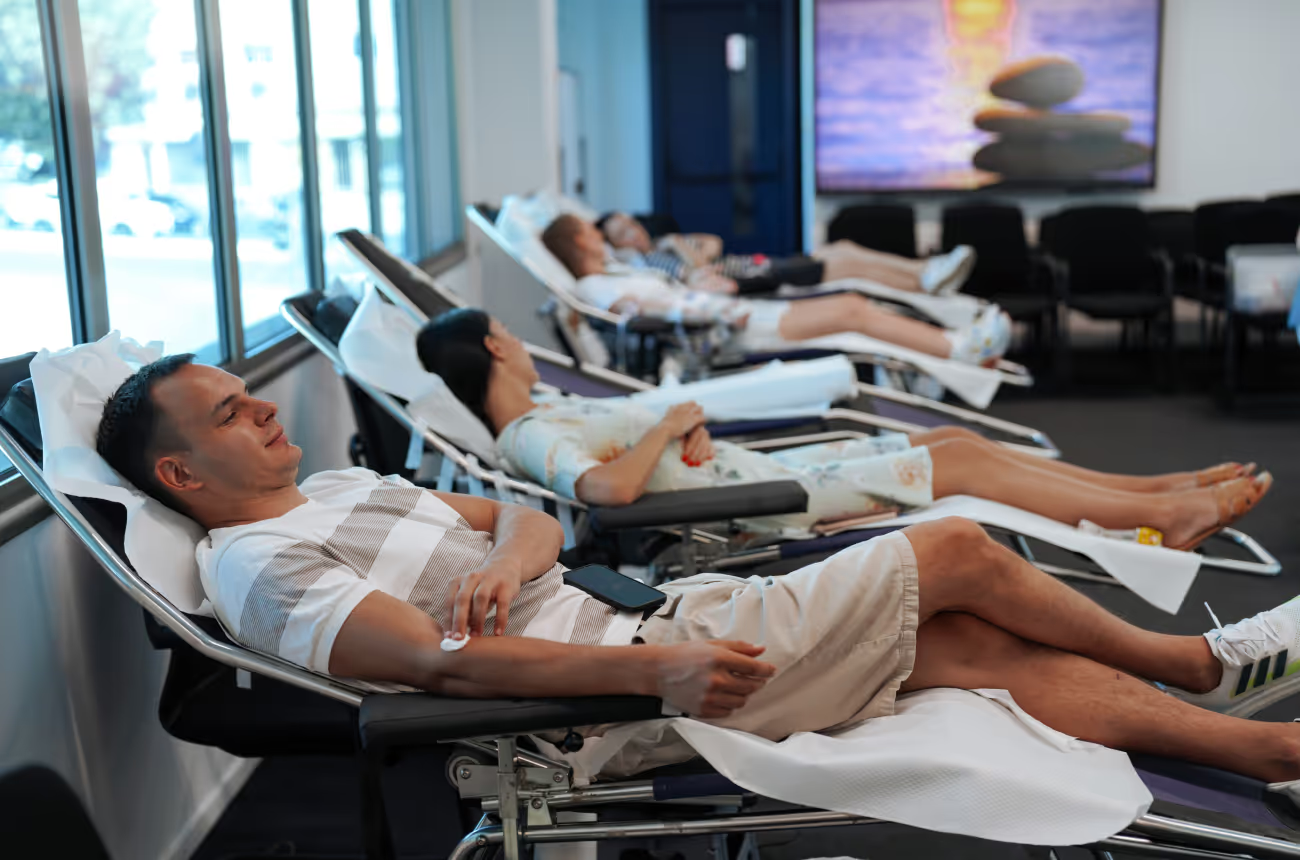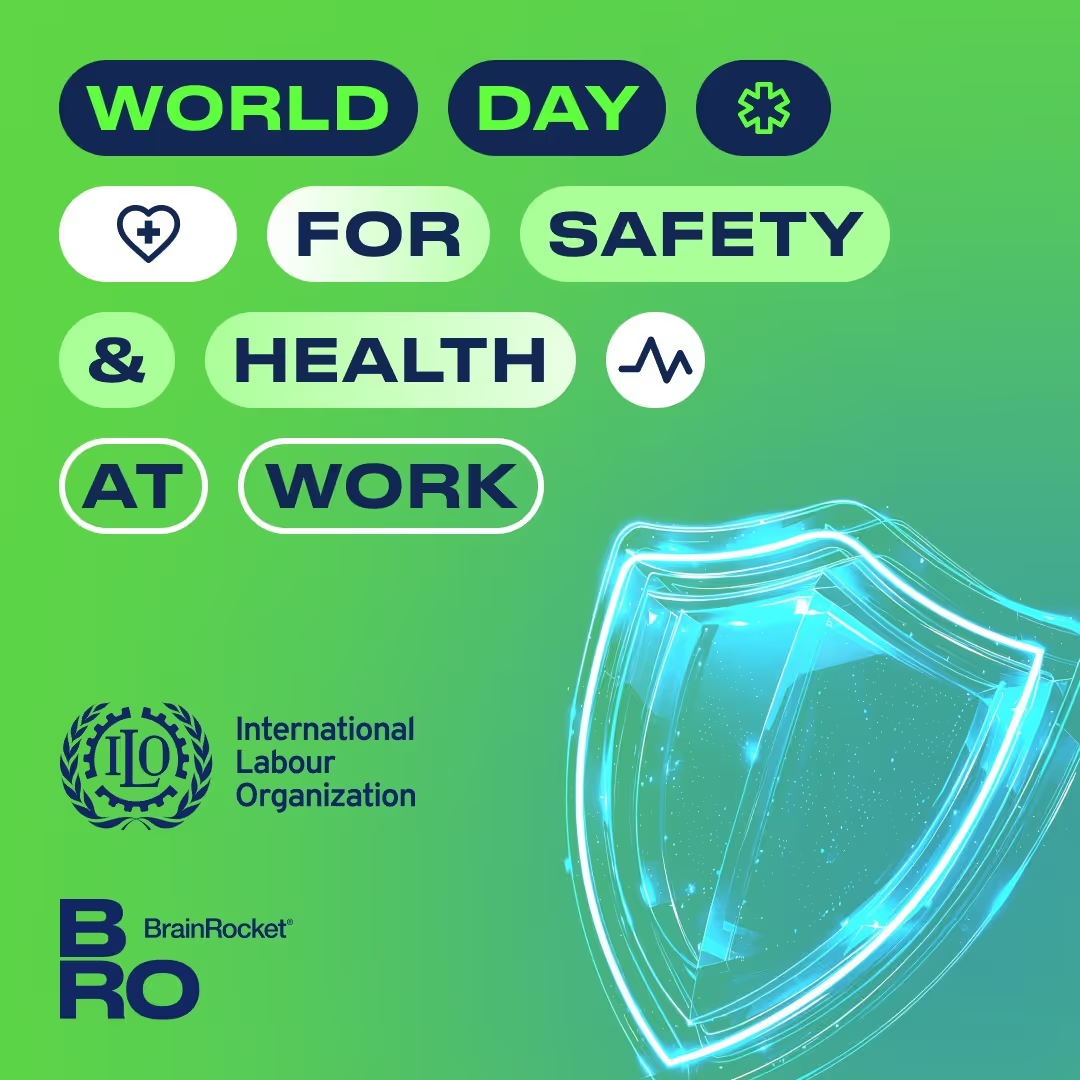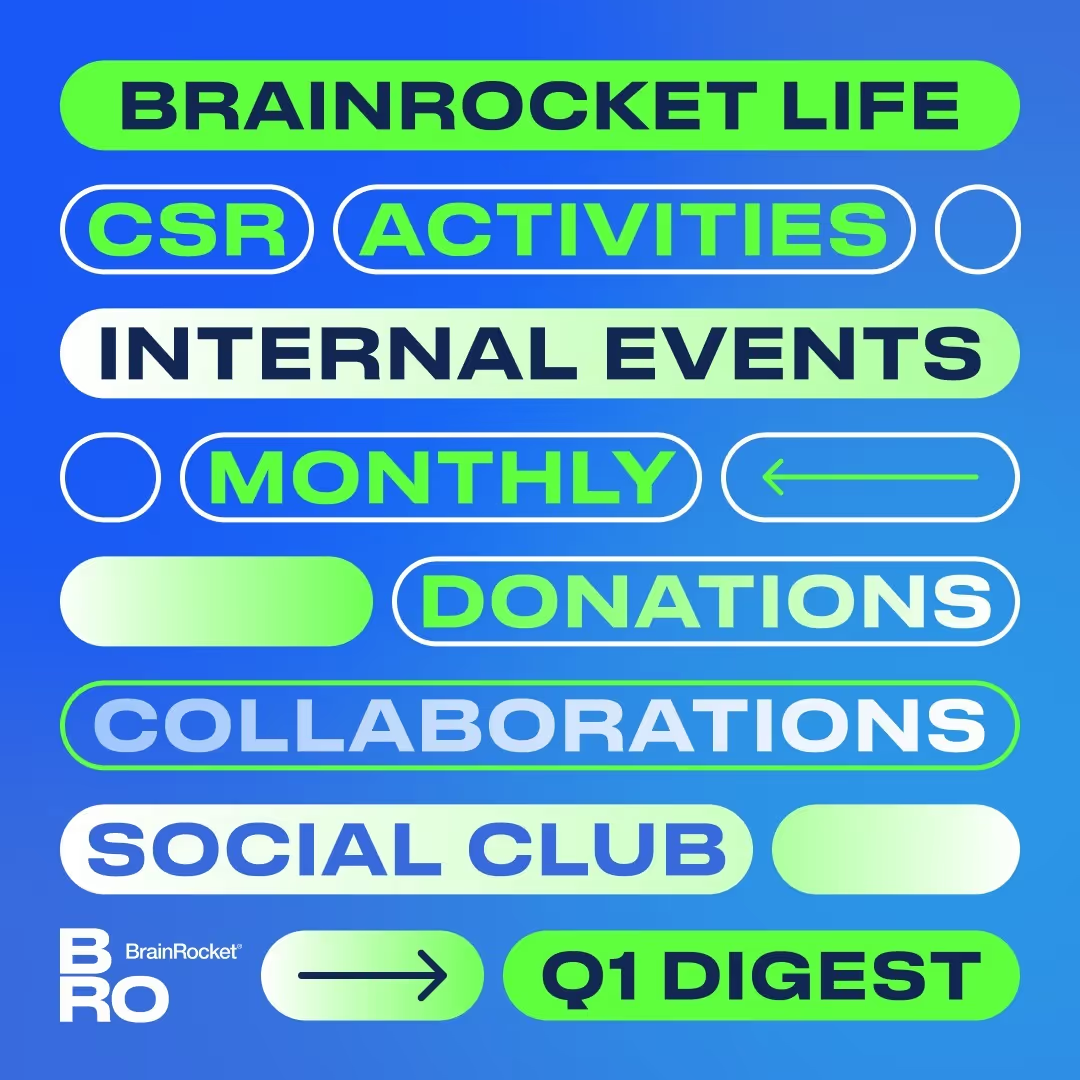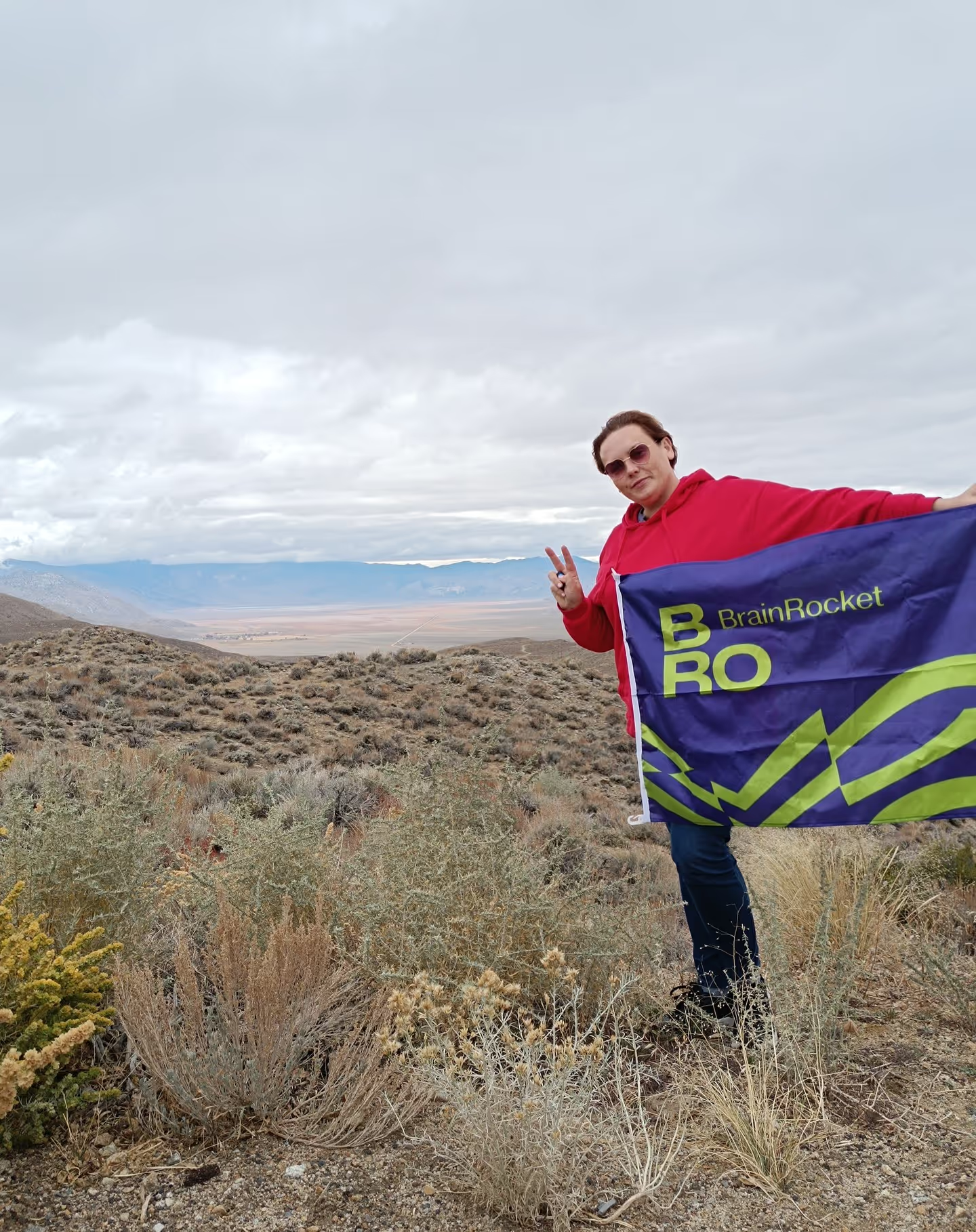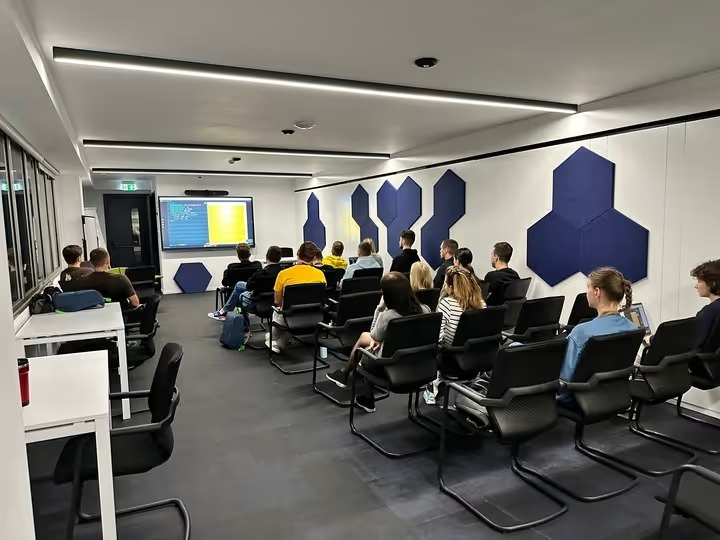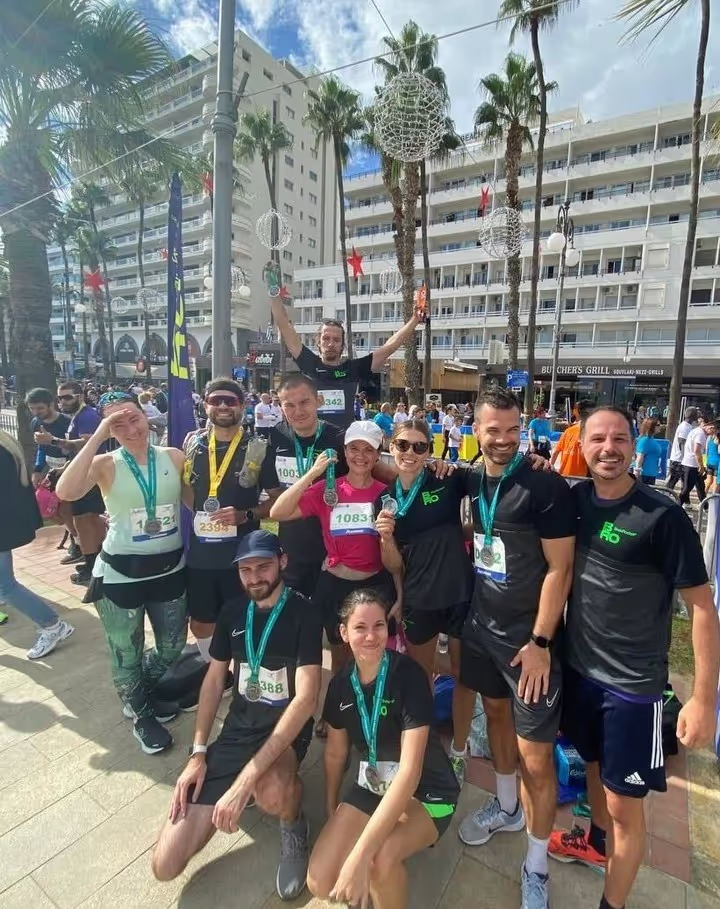BROACTIVE SAFETY CULTURE
From our Health and Safety Officer

“A safe, healthy workplace helps us spark new ideas, build a strong team, and stay connected to our community and industry,” said Roman Zolotarenko, CEO of BrainRocket.
Employees' safety and wellness are crucial elements of a productive and efficient workplace environment. You can only complete tasks or reach business KPIs if you feel energized and confident. There are many more reasons to care about employees' safety. Still, today, I want to discuss how we managed safety and healthcare in the BrainRocket space and why it's so essential for any business. Let's answer a few questions.
Why does Health and Safety increase Productivity and Efficiency?
Organizations have learned several crucial lessons over the previous chaotic years during the pandemic — some the hard way. Managers and supervisors have observed how continuing, well-planned safety affects productivity and quality of work from these numerous lessons that we are still learning.
Occupational Health Science recently published a report stating that "workers safety and health are of primary importance, as both are key elements in achieving an organization's desired productivity and efficiency."
When a workplace or the work itself is unsafe, it could indicate a lack of management. Employees who are dissatisfied with their jobs and less motivated could arise from this. Poor safety management can endanger operations and productivity in addition to the safety of the team members. A lawsuit could also result in hefty fines that would cripple an organization if not entirely shut down.
Welbeing and safety culture priority at the workplace helps teammates to focus on the quality of their work rather than the anxiety and stress that come with potentially dangerous work settings. It works even for remote workers. A recent Science Direct study states that a safe environment "influences enterprise outcomes such as turnover, absence, productivity, and healthcare costs."
Workplace safety has a substantial impact on several business KPIs. In other words, safer workplaces have fewer accidents, which leads to lower occupational health expenditures, higher employee retention and satisfaction, less employee downtime, and less retraining time.
In a safe working environment, there are very few accidents. It reduces downtime for safety investigations and lowers worker's compensation expenditures. A safe working environment also minimizes the time it takes for employees to recover from injuries or illnesses. Avoiding injuries is way easier and more efficient than recovering after workspace incidents.
Employees are generally more confident and comfortable when their employers are concerned about their safety. Also, absenteeism rates fall, and employees focus more on completing their jobs.
How can companies build a good brand name and culture following health and safety procedures?
I could talk for hours on the subject, but let's highlight the five most fundamental characteristics essential for a firm to generate the culture necessary to have a positive reputation and a good brand name.
Communication
HSE Committee meetings, as frequent as necessary, are an excellent method to improve communication while fostering a positive culture. Increase employee commitment by allowing them to lead the discussions. These can even be carried out remotely.
Some valuable insights to communicate better...
Make safety regulations that describe your organization's best practices and expectations easily accessible, electronically and on paper. But first, let me explain what I mean by "increase communication" regarding safety.
- Explain standards and procedures. Adults require knowledge that is relevant to them. Ensure that standards, processes, and aims are clear. Educate employees on why these standards are here and provide clear examples of how they help the company and people.
- Allow time for the team or individuals to speak and listen actively. Do not interrupt the message when it is being sent or returned. Allow time to reflect on what you're hearing, ponder, and then pick your next steps.
- When communicating, utilize the appropriate medium and forum. If the message affects the entire team, ensure everyone receives it.
- Hold an open chat with feedback opportunities. Do not single out individuals in front of their peers.
- Use directness, diplomacy, and positive reinforcement. Even if the talk is crucial, how you approach and open it up might influence whether the communication succeeds. Keep it concise, minimize lengthy explanations, and ask staff for solutions to highlighted problems. Use positive feedback to reinforce safe work behavior since it enhances the likelihood.
- During the conversation, look for opportunities for collaboration. Listen carefully and look for places to agree with the individual or team. As a result, it aids in the discovery of common ground and the rapid development of a solution.
- Be aware of your body language. Our body language influences much of what we convey and how our audience interprets it. How you move, sit, and stand influences how others view you. Improving your body language begins with being aware of your emotions as well as the emotions of others.
- Give advice and support. Substandard acts or practices should be met with positive remedial action and particular guidance to modify undesirable behavior. Do not simply point out what needs to be corrected.
Provide Training
Employee training indicates your dedication to safety. Trained staff are also more likely to adopt a safety culture because they are aware of hazards and their impact on workplace safety. To reinforce learning, review key concepts from training sessions regularly.
Involve Employees
Building and maintaining a strong safety culture begins with the basics. Involving employees in the process is another method to gain their support. Inquire about their reporting process preferences or thoughts on current communication options.
Lead by Example
Set a good example by adhering to all safety standards and encouraging your colleagues to do the same. Employees will follow management's lead if they commit to safety. Employee buy-in is essential for fostering a healthy safety culture. Workers will not support safety if they do not see their superiors following policies and procedures. Safety is more than just talking the talk; it is also about walking the walk.
Create and Implement a Process for Positive Reporting
Employees who report safety issues or concerns should be rewarded. When employees feel comfortable reporting issues and believe that the reporting process is good, developing and maintaining a strong safety culture is much easier.
How does Brain Rocket promote Health and Safety in the workplace?
Lack of awareness can result in a bad health and safety culture, which leads to more injuries, accidents, and absence days, as well as a drop in profitability and productivity. As a result, you must recognize the warning indications of poor habits.
Consequently, I'd like to focus on something other than what we do at BrainRocket to improve workplace health and safety but on what we don't.
To begin with, we do not allow any incident or accident to go unreported, and we investigate all of them. Employee safety and profit are tightly linked for us.
Furthermore, we do not foster a blaming culture, which is a personal red line for me. As a Health and Safety Professional, incident or near-miss reporting is always a benefit and never a curse because it is the best way to learn and improve your procedures and company’s management system in general.
Most events arise due to faulty procedures. Hence, it is not fair to blame any employee and assign responsibility for all accidents to the individual(s) before returning to production rather than investigating any occurrence further.
Discussing key business aspects like profitability, BrainRocket views health and safety not as a cost but a mean to foster a positive culture, reducing expenses related to work illnesses, repairs, and legal fines. Though communication is vital for a positive safety culture, we don't promote close interaction between management and employees regarding safety concerns, encouraging them instead to voice any issues.
How does Health and Safety encourage Corporate Social Responsibility (CSR)?
Integrating Occupational Health and Safety into CSR necessitates certain conditions, emphasizing responsibility and accountability. It focuses on workers' social, emotional, and physical well-being, long considered key to CSR. This integration, reflecting voluntary consideration of social and environmental concerns in corporate decisions, has been echoed in various CSR definitions and approaches over recent decades.
Numerous case studies, as well as international and national initiatives related to corporate social responsibility, presented and analyzed by the European Agency for Safety and Health at Work in 2004, confirmed the close relationship between occupational safety and health with CSR. The Agency explicitly noted in its report: "There can be no doubt that safe and sound working conditions and good worker health belong to the social responsibilities of companies and can be regarded as an integral part of CSR" while emphasizing that "companies cannot be socially responsible externally without being socially responsible internally."
BrainRocket ensures medical coverage for staff through a local major insurance firm, promoting a healthy lifestyle by providing daily meals and free gym access. Our CSR aims to uphold safety and health, focusing on continuous danger prevention and protection. Integrating OSH within CSR strategically enhances our business by improving reputation, productivity, consumer loyalty, and share value, reflecting our commitment to ensuring a safe work environment significantly highlighting our emphasis on safe working conditions in the marketplace.
European Week of Workplace Safety and Health (23-27 October 2023)
The European Week for Safety and Health at Work, held annually in October (calendar week 43), highlights every Healthy Workplaces Campaign. With hundreds of awareness-raising activities taking place across the EU and beyond and increased media coverage, now is an excellent time to become involved in the campaign. Among the activities planned to commemorate European Week are special film screenings, social media events, conferences, exhibitions, contests, and training sessions.
This year's main campaign topic is "Safe and healthy work in the digital age".
The campaign is organized around five key areas identified through EU-OSHA research, including the OSH overview on digitalization for 2020-23 and associated foresight studies.
They investigate digital technology opportunities while tackling all potential challenges:
- digital platform work,
- task automation,
- remote and hybrid work,
- worker management using AI and
- smart digital systems.
Focusing on these priority areas, supporting good practice, and raising knowledge about the topic's relevance can provide all European Union workers with a safer, healthier, and more sustainable digital work environment.












